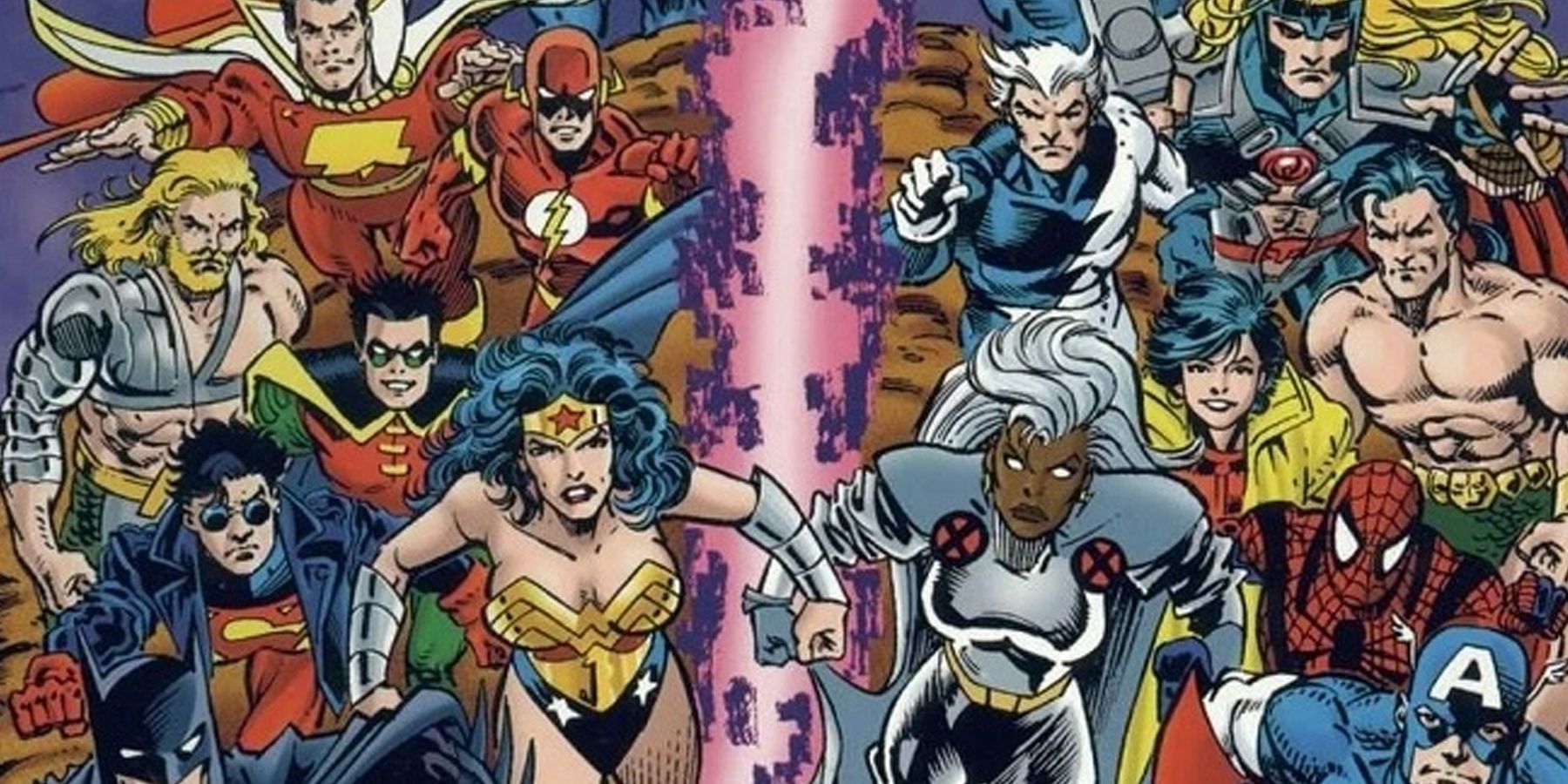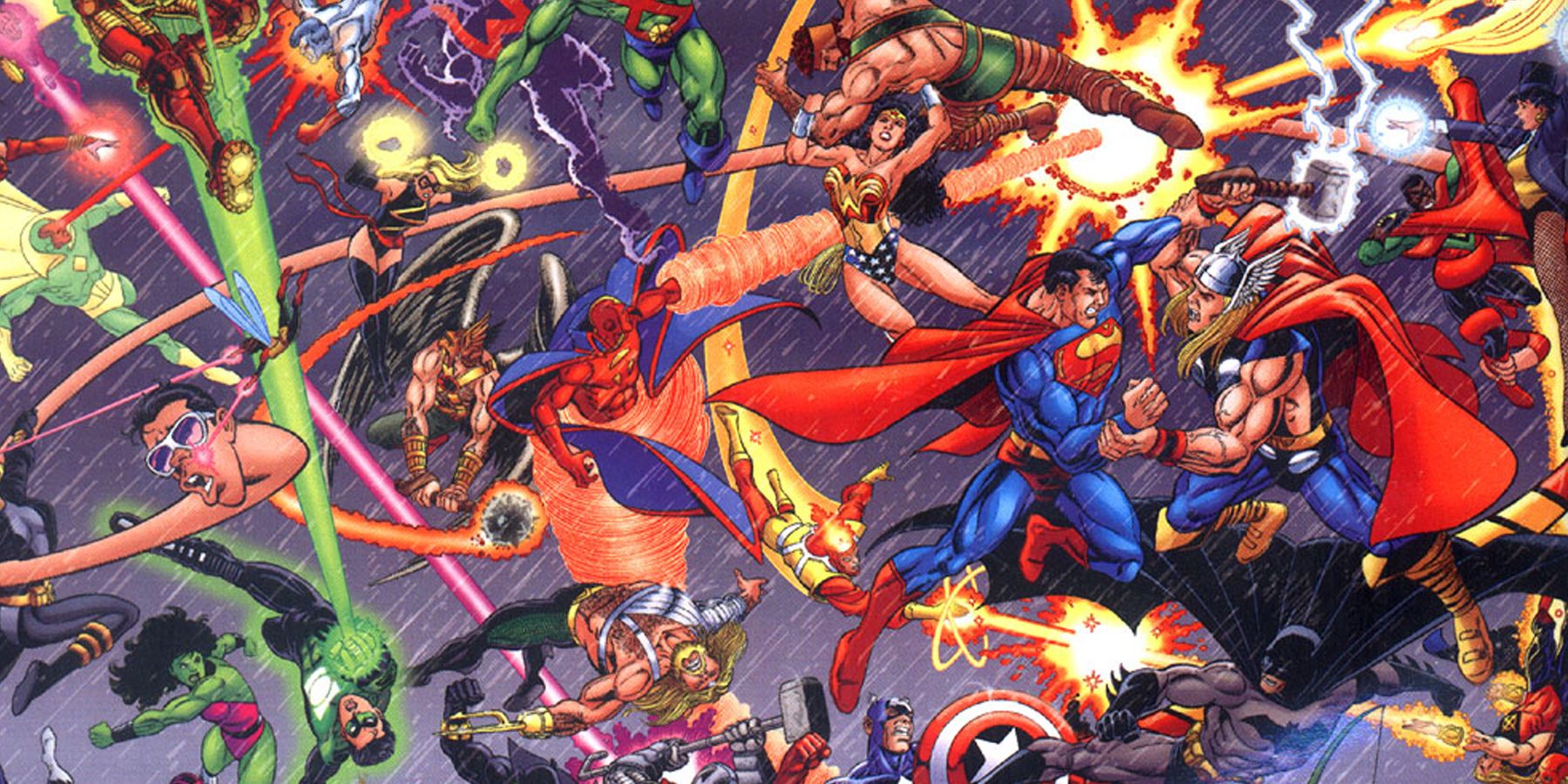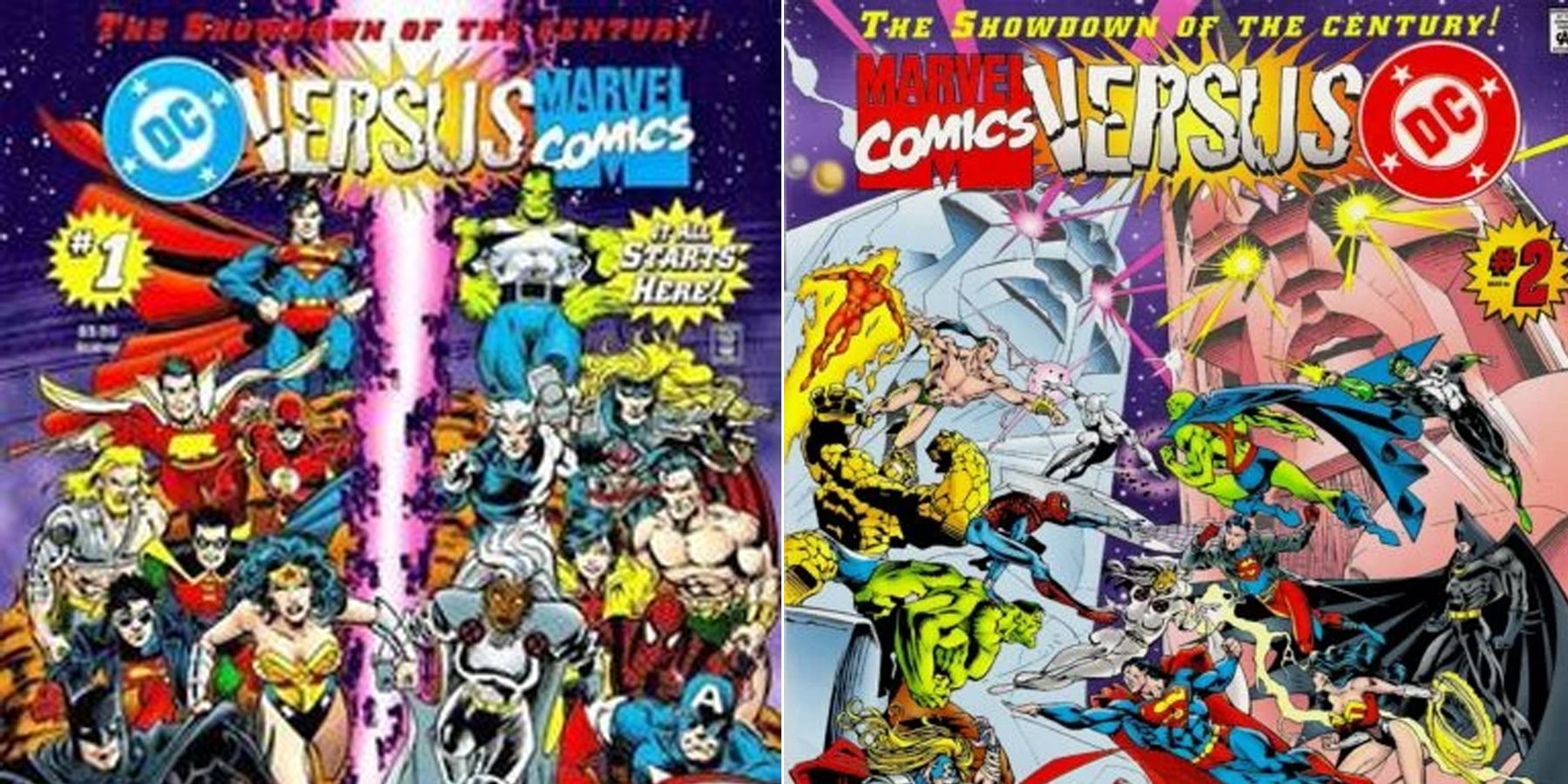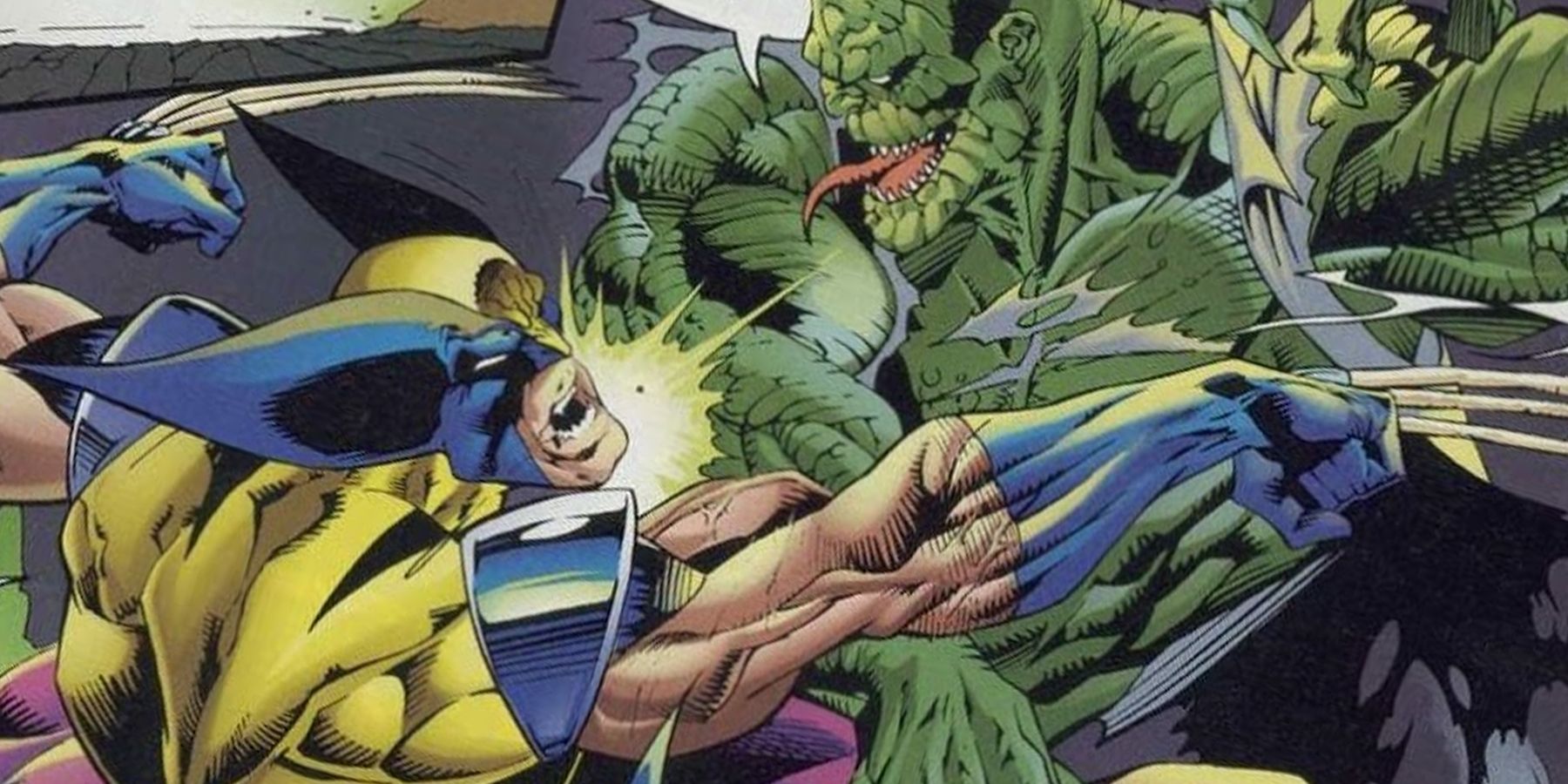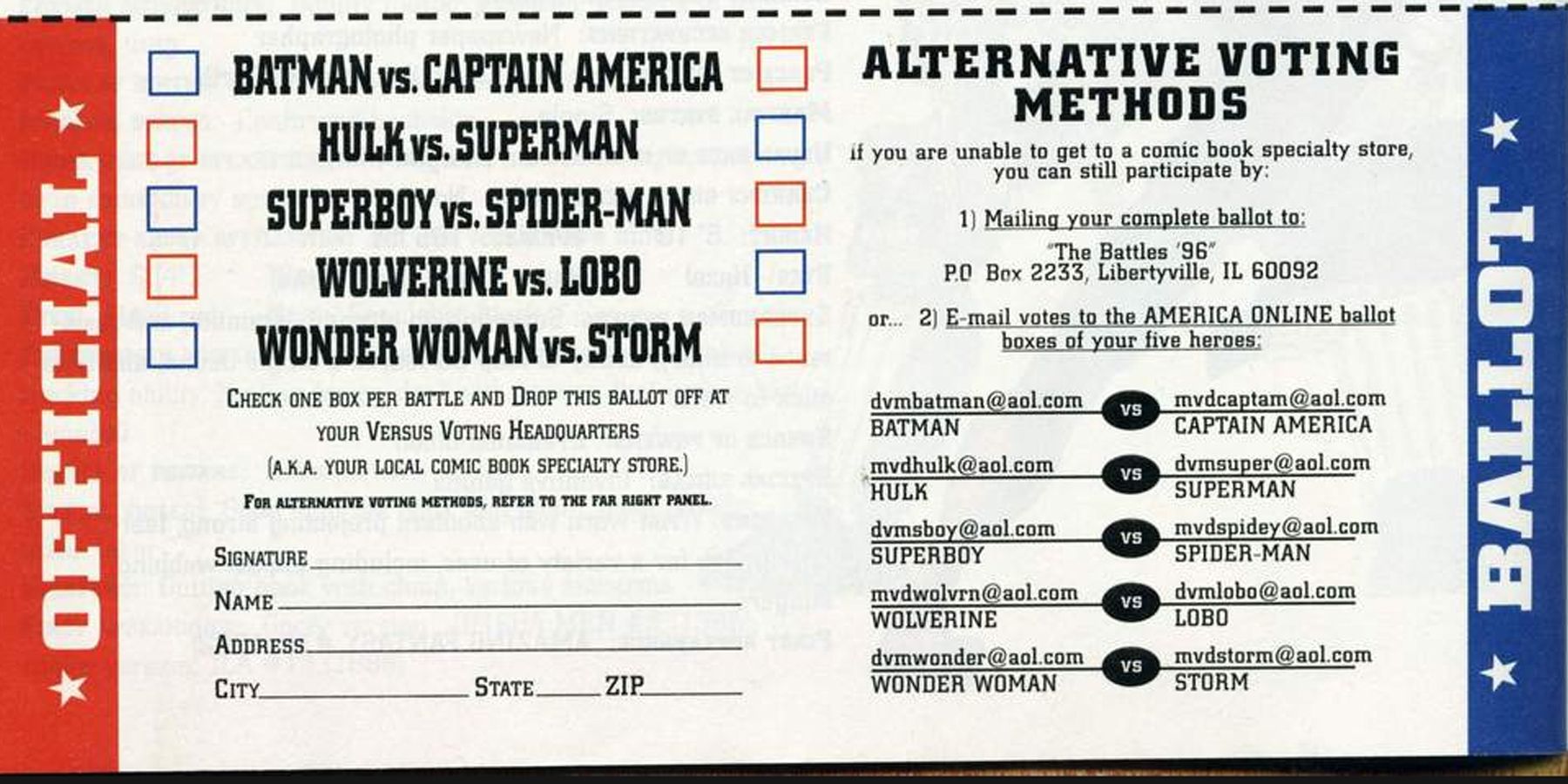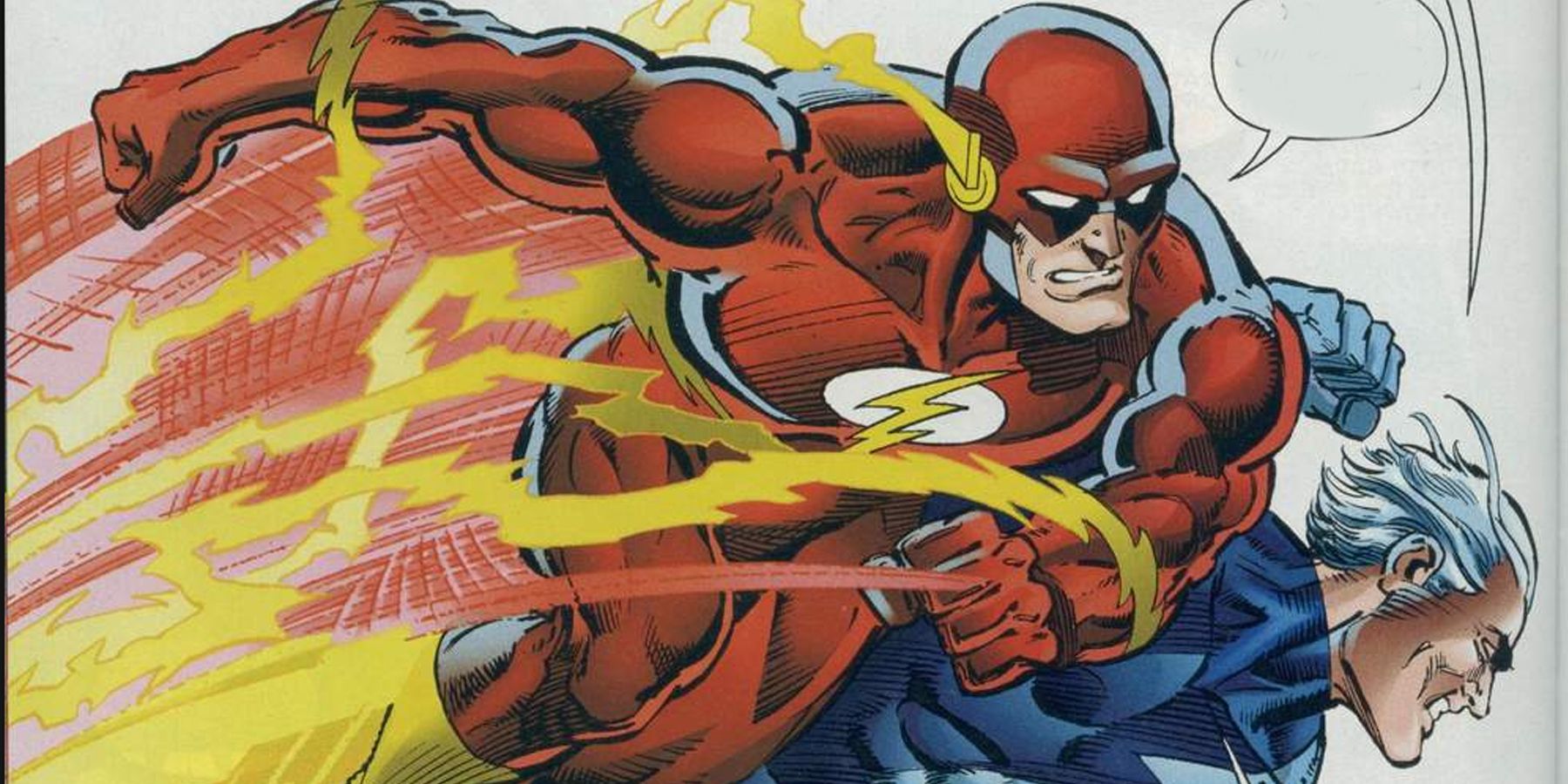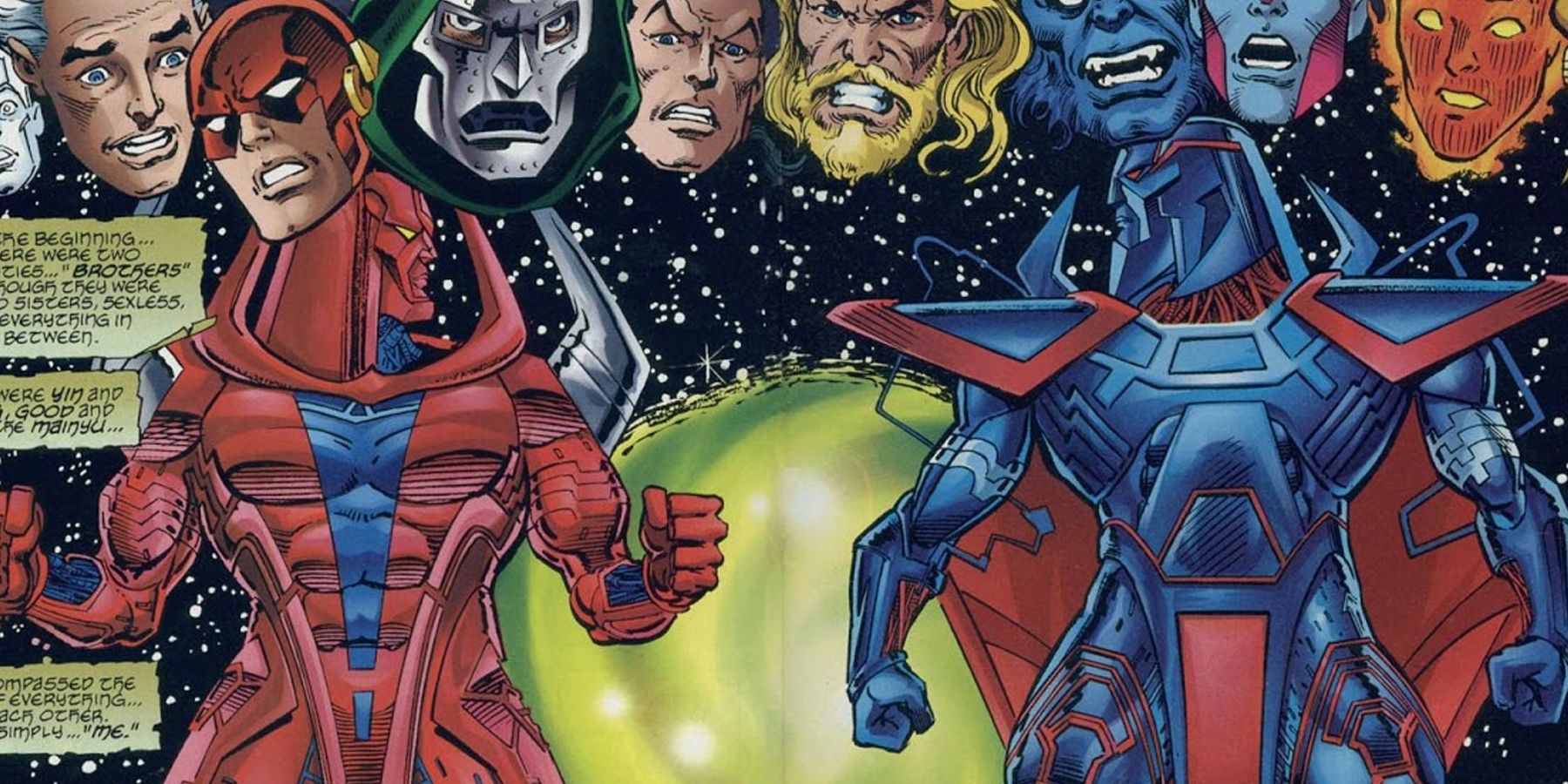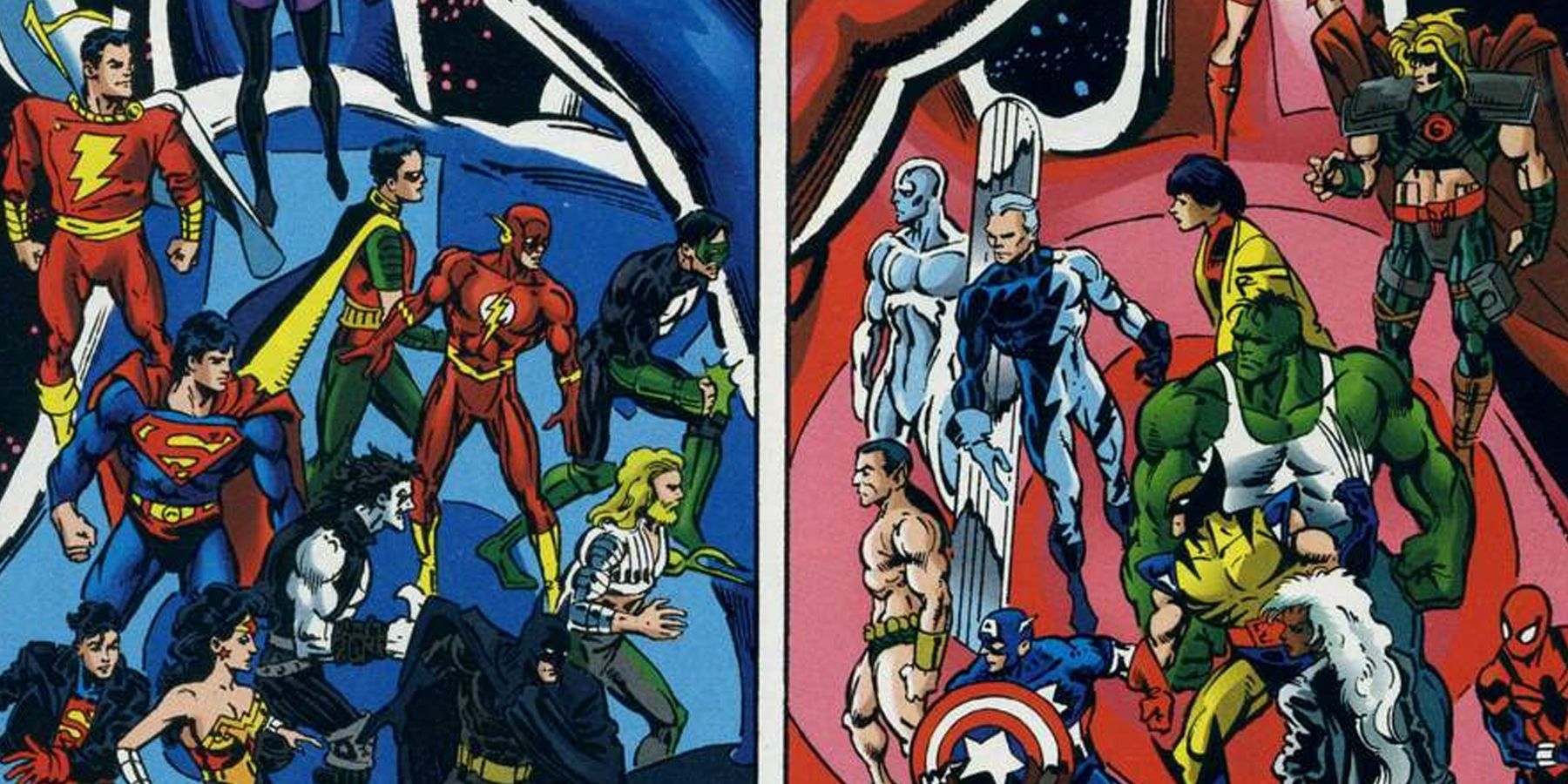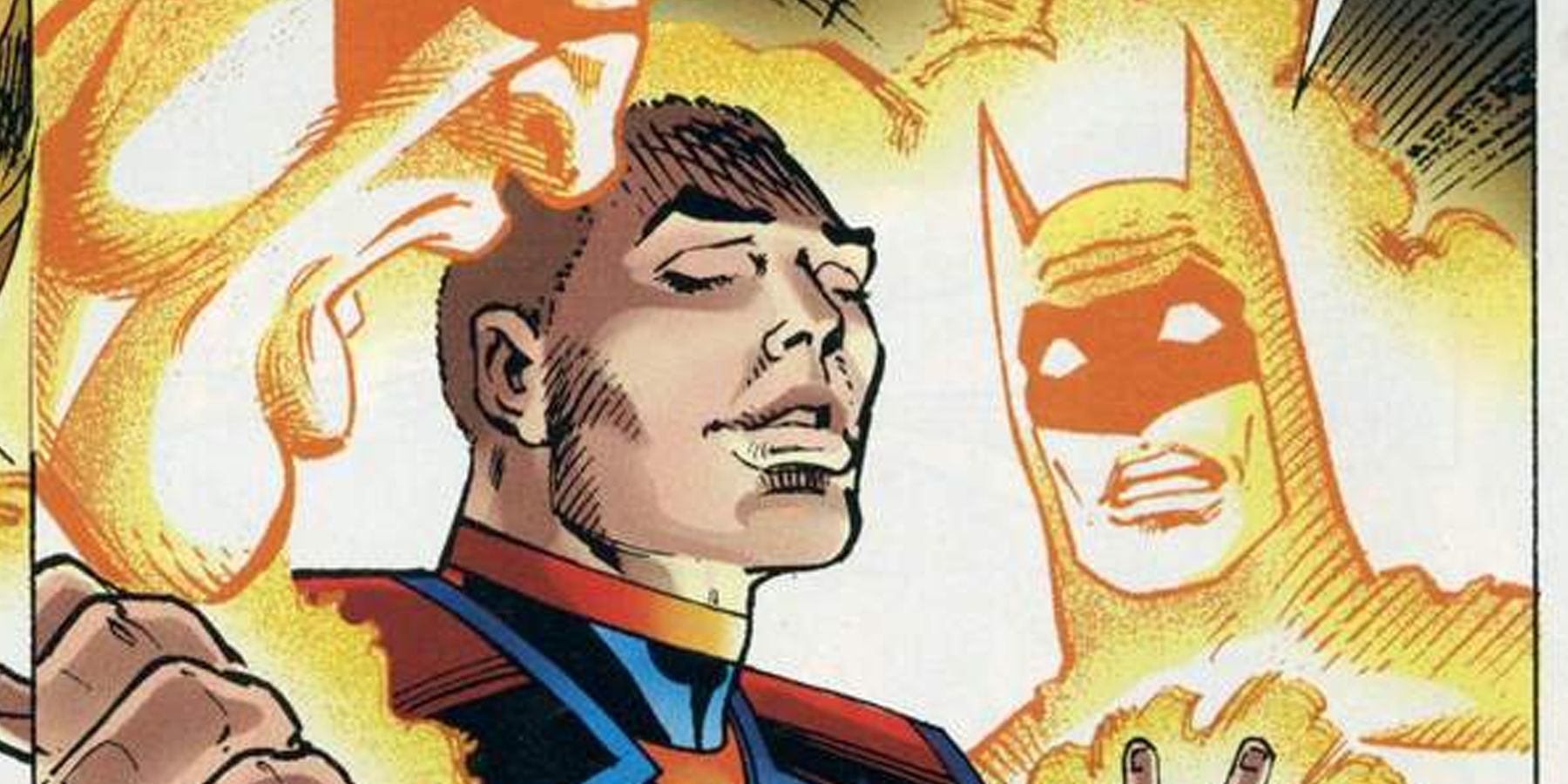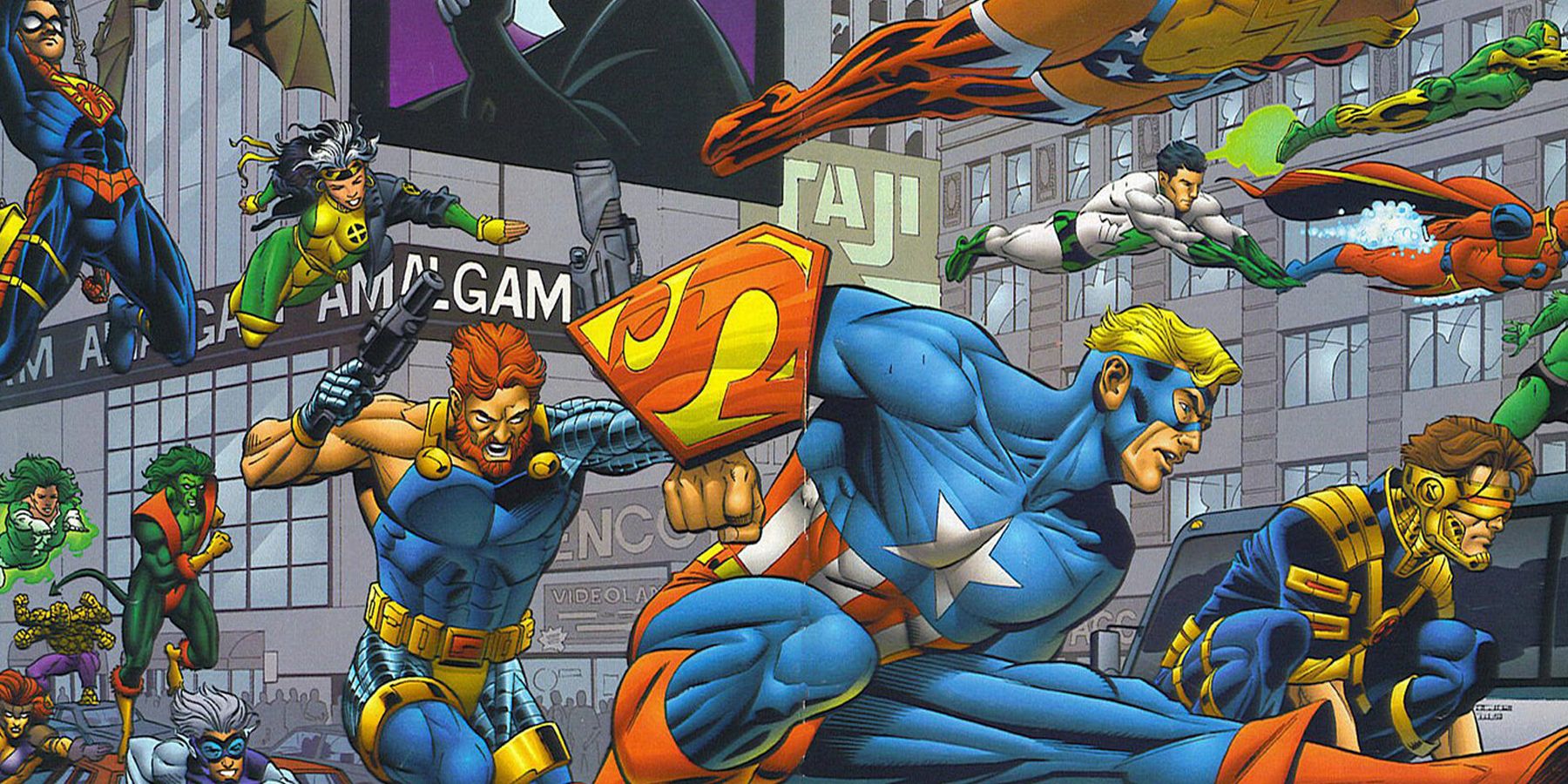With both the Marvel Cinematic Universe and DC Comics coming full swing with their slate of various superhero films, it’s not such a new phenomenon to have fans ponder whether the Avengers would even get to meet the Justice League and duke it out. And while a lot of people have created theories and fan content trying to make this come to life, it might surprise most to find out that this dream crossover actually already happened in the form of Marvel vs. DC.
As fans would expect, this 1996 crossover did, indeed, feature some of the most iconic characters from both publishing houses in a bid to save their home universe. However, before fans dash to read about what prompted two massive universes to team up, there may be things they need to know behind the scenes of the iconic miniseries.
9 It's Vastly Different From JLA/Avengers
At first glance, comic book fans might wonder if there’s any difference between Marvel vs. DC and another crossover comic, JLA/Avengers. And as a matter of fact, they’re two different stories. The first crossover, Marvel vs. DC, was published way back in 1996. Meanwhile, JLA/Avengers was published in 2003. Unlike the hardcore deathmatch between DC and Marvel heroes in the 1996 story, JLA/Avengers was a team-up story that featured iconic characters from both the Avengers and the Justice League.
Written by Kurt Busiek and drawn by George Perez, JLA/Avengers involves exiled Oan Krona (DC) traveling across universes and destroying them to learn the truth about creation. In order to save the Marvel Universe, the Grandmaster (Marvel) proposes a game involving their respective universe’s champions. As such, both the Justice League and the Avengers need to find 12 artifacts of power — six from each universe — to win. These items included the Infinity Gauntlet, among other powerful artifacts.
8 Named Differently, Depending On The Publisher
Being a story published by both Marvel and DC Comics, Marvel vs. DC actually had different between the different publishers. The miniseries had four issues, with each publishing house assigned to publish two. As such, each publisher mentioned their own name in the title first.
For instance, since DC Comics was assigned to publish Issue 1 and Issue 4, those issues were named DC vs. Marvel. Meanwhile, since Marvel was assigned to publish Issue 2 and Issue 3, those issues were named Marvel vs. DC.
7 Smaller Match-Ups Led To Main Events
It can be tricky for comic book fans to determine just which matches in the crossover mattered, because quite a lot of things have been happening all at once. After all, heroes of different universes accidentally meeting each other will likely result in a big conflict. Thankfully, Marvel vs. DC doesn’t make spotting major events difficult for fans.
There are 11 battles fought that determined the fate of the universe. These are the same 11 match-ups that fans had to vote for during the end pages of Issues 1 and 2, and recorded across Issues 3 and 4.
6 A Fight For The Universe, Determined By The Reader
At its core, Marvel vs. DC is a miniseries crossover that pitted some of the most popular superheroes from both publishing houses. However, what’s more interesting is that the outcomes of the battles were actually based on reader ballots distributed amongst comic book stores. This way, fans could submit their desired results in advance.
This was quite similar to the stunt pulled by DC Comics in 1988 during “A Death in the Family.” This incorporated a voting system that determined the fate of then-unpopular Jason Todd at the hands of the Joker.
5 Not All Battles Were Based On Votes
Interestingly, not all battles in the crossovers were determined by voter ballots, though. Of the eleven battles, six matchups were decided by the creative team. These included:
- Namor (Marvel) vs Aquaman (DC)
- Elektra (Marvel) vs Catwoman (DC)
- Quicksilver (Marvel) vs The Flash (DC)
- Jubilee (Marvel) vs Robin (DC)
- The Silver Surfer (Marvel) vs Green Lantern (DC)
- Thor (Marvel) vs Captain Marvel (DC).
However, fans did decide the outcome of battles involving some of the biggest names in both publishing houses at the time. These included:
- The Hulk (Marvel) vs Superman (DC)
- Spider-Man (Marvel) vs Superboy (DC)
- Wolverine (Marvel) vs Lobo (DC)
- Storm (Marvel) vs Wonder Woman (DC)
- Captain America (Marvel) vs Batman (DC).
4 A Simple, Straightforward Premise
The story of Marvel vs. DC begins with major characters from both universes disappearing with a ray of yellow light to another universe. Soon enough, elements of both universes have begun appearing in the others’, with Clark Kent eventually working with Ben Reilly in a Daily Bugle run by J. Jonah Jameson, for example.
It’s soon revealed that even DC Comics’ the Specter and Marvel’s the Great Tribunal had no way of identifying what was going on. It was soon after their discovery of “The Brothers” that things became clear. Apparently, two entities known as the Brothers were in charge of creating their own versions of reality, with the two being in-comics representations of both Marvel and DC. Now that they’re aware of each others’ existence, they have their creations fight to determine which universe stays and which disappears forever.
3 Rules Weren't As Brutal As Fans Imagined
Contrary to what fans might expect, Marvel vs. DC doesn’t have the “death match” system that some fans might clamor when it comes to things like these. There’s no “fight to the death” in this crossover that had their universes hang in the balance. However, instead of just being considered the winner by leaving an unconscious opponent, the Brothers did set rules when it came to how each champion would challenge each other.
The rule was simple: the first person to render an enemy immobile or unconscious wins, similar to the rules of wrestling. Moreover, it’s implied in-story that each champion was made aware of these rules before being sent to a random area where they faced their respective opponent.
2 Enter Amalgam Comics
Such was the success and critical acclaim of Marvel vs. DC that their story arc spawned the creation of the Amalgam Universe, with stories told through the Amalgam Comics publishing imprint. Shared by both Marvel Comics and DC Comics, the Amalgam Comics Universe featured combinations of popular heroes from both publishing houses.
In the Marvel vs. DC story, this amalgamation happened when the new hero Access, who can access both universes, used his powers to merge Batman and Captain America together. To deal with this change, both the Specter and the Living Tribunal also used their powers to merge the two universes together.
1 The Strange Case Of The Amalgam Universe
The entire history of Amalgam Comics could be summarized within 24 one-shots, designed as “first-issues” of the fictional combination characters in the Amalgam Universe. These were published in 1996 and 1997, with Amalgam Comics releasing 12 issues every year. Of these 12 issues, six of these stories have been published by Marvel, and six were published by DC Comics.
What’s more entertaining is that the Amalgam Comics has a fictionalized publishing history that acts as though it existed throughout the history of comics. In turn, inside pages of Amalgam Comics share fictional editorial histories that are callbacks to various popular events in both Marvel and DC Comics. These include reboots and retcons throughout the various ages.

